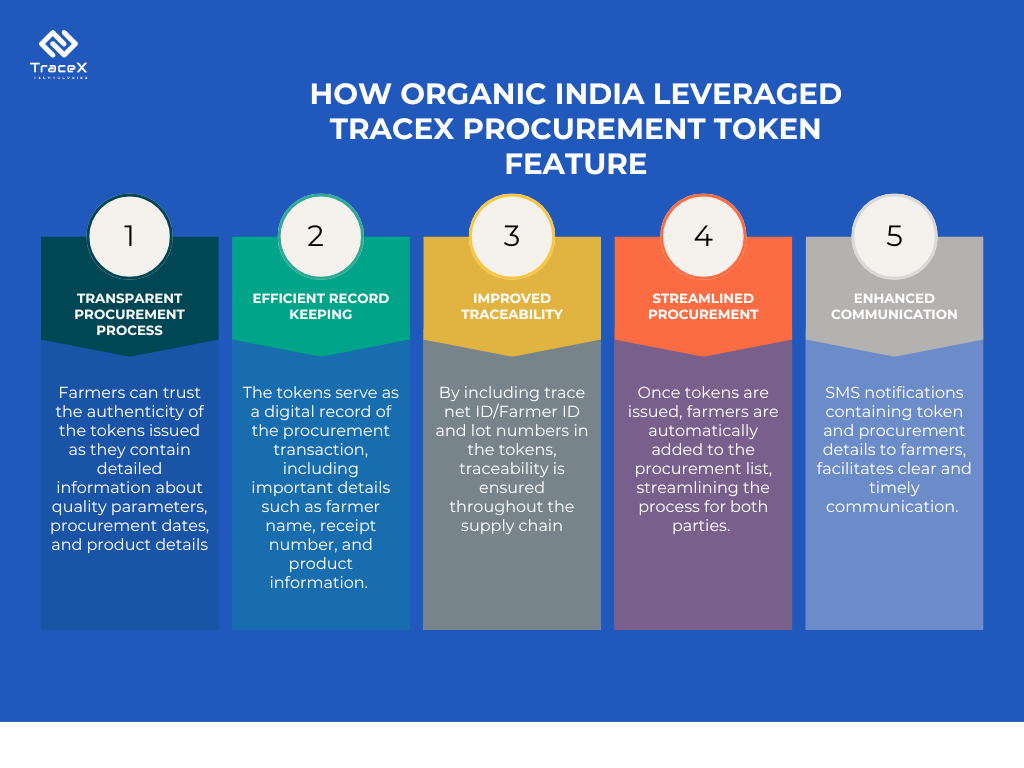Contact: +91 99725 24322 |
Menu
Menu
Quick summary: Explore the complexities surrounding fair pricing for farmers in the agricultural sector. Discover the economic, social, and policy challenges faced by farmers and learn about innovative solutions aimed at promoting transparency and equity in pricing practices.

In the intricate web of global agricultural markets, ensuring fair pricing for farmers remains a formidable challenge. Fluctuating supply and demand dynamics, influenced by a myriad of factors ranging from weather patterns to geopolitical tensions, often leave farmers vulnerable to price volatility and exploitation. As agricultural supply chains grow increasingly complex and interconnected, the need to navigate these challenges becomes more pressing than ever.
Key Takeaways
Supply and Demand Dynamics in Agricultural Markets
Supply and demand dynamics in agricultural markets refer to the forces that determine the quantity of agricultural products available (supply) and the quantity desired by consumers (demand). These dynamics are influenced by various factors such as production levels, consumer preferences, weather conditions, government policies, and global market trends. When the supply of a particular agricultural product exceeds demand, prices tend to decrease as producers compete to sell their goods. Conversely, when demand exceeds supply, prices rise as consumers compete for limited goods. Understanding these dynamics is essential for farmers, traders, policymakers, and other stakeholders in the agricultural industry to make informed decisions regarding production, pricing, marketing strategies, and resource allocation.
Fair pricing plays a crucial role in supporting farmers’ livelihoods and ensuring economic stability within agricultural communities. When farmers receive fair prices for their products, they can cover their production costs, earn a reasonable income, and invest in their farms’ sustainability and growth. Fair pricing also contributes to economic stability by reducing income disparities, promoting social equity, and supporting local economies. Additionally, fair pricing practices help maintain the viability of the agricultural sector by incentivizing farmers to continue producing essential food and agricultural commodities. Without fair pricing, farmers may struggle to sustain their operations, leading to reduced agricultural output, increased poverty levels, and food insecurity. Therefore, ensuring fair pricing in agricultural markets is vital for the well-being of farmers and the overall stability of the agricultural sector
Supply-Side Factors Affecting Agricultural Markets:
1. Production Levels and Crop Yields:
Production levels and crop yields are fundamental factors influencing supply dynamics in agricultural markets. The quantity of agricultural products available for sale depends on the output of farming activities, including planting, cultivation, and harvesting. Factors such as technological advancements, agricultural practices, land availability, and input costs affect production levels and ultimately determine the supply of agricultural commodities. Higher crop yields contribute to increased supply, leading to market surpluses and potential price declines, while lower yields may result in supply shortages and price fluctuations.
2. Weather Conditions and Natural Disasters:
Weather conditions and natural disasters significantly impact agricultural production and supply chains. Adverse weather events such as droughts, floods, storms, and extreme temperatures can damage crops, reduce yields, and disrupt farming operations. These unpredictable factors pose challenges to farmers, affecting the quantity and quality of agricultural output. In times of unfavorable weather conditions, supply shortages may occur, leading to supply constraints and price volatility in agricultural markets.
Demand-Side Factors Influencing Market Dynamics:
1. Consumer Preferences and Trends:
Consumer preferences and trends play a crucial role in shaping demand dynamics in agricultural markets. Changing consumer preferences, dietary habits, lifestyle choices, and cultural factors influence the types and quantities of agricultural products demanded by consumers. Preferences for organic, locally sourced, or sustainably produced foods, for example, can drive shifts in demand patterns and market trends. Understanding consumer preferences and adapting product offerings accordingly is essential for farmers and agribusinesses to effectively respond to market demand.
2. Global Trade Patterns and Economic Conditions:
Global trade patterns and economic conditions have a significant impact on agricultural market dynamics. International trade agreements, tariffs, import/export policies, currency exchange rates, and geopolitical factors influence the flow of agricultural products across borders. Economic conditions, such as GDP growth, inflation rates, unemployment levels, and consumer purchasing power, also affect the demand for agricultural goods both domestically and internationally. Changes in global trade patterns and economic indicators can create opportunities or challenges for farmers, exporters, and stakeholders involved in agricultural trade. Understanding these demand-side factors is crucial for optimizing market positioning and addressing evolving market trends and dynamics.
Challenges Faced by Farmers in Pricing
One of the primary challenges farmers encounter in pricing their agricultural products is the volatility in commodity prices. Fluctuations in supply and demand dynamics can lead to significant price changes, affecting farmers’ incomes and profitability. Supply-side factors such as weather conditions, crop yields, and production levels, as well as demand-side factors such as consumer preferences, market trends, and global trade patterns, contribute to price volatility. Farmers must navigate these fluctuations and adjust their pricing strategies accordingly to mitigate financial risks and maintain viability.
Speculative trading and market manipulation can exacerbate price volatility in agricultural markets, posing additional challenges for farmers in pricing their products. Speculators and market participants may engage in speculative activities such as futures trading, options trading, and derivatives trading, which can influence commodity prices. Market manipulation tactics such as price fixing, cornering the market, and spreading false information can distort price signals and undermine market transparency. Farmers must contend with the impacts of speculative trading and market manipulation on commodity prices, which can disrupt pricing mechanisms and complicate pricing decisions.
Information asymmetry between farmers and buyers presents a significant challenge in pricing agricultural products. Farmers often have limited access to market data, pricing information, and real-time market intelligence, making it challenging to make informed pricing decisions. Lack of transparency in market transactions and opaque pricing mechanisms can disadvantage farmers, leading to suboptimal pricing outcomes and reduced bargaining power. Improving access to market information and enhancing transparency in pricing can empower farmers to negotiate fair prices and improve their market competitiveness.
Farmers may face challenges due to their dependence on middlemen, brokers, and intermediaries in the agricultural value chain. Middlemen play a crucial role in connecting farmers to markets, facilitating transactions, and negotiating prices on behalf of farmers. However, reliance on middlemen can lead to information asymmetry, unequal bargaining power, and exploitative practices. Farmers may face challenges in obtaining fair prices for their products and may incur additional costs associated with middlemen’s commissions and fees. Strengthening farmers’ direct access to buyers, fostering transparent market mechanisms, and promoting farmer-centric market models can help address these challenges and empower farmers in pricing their products effectively.
Impact of Unfair Pricing on Farmers
Unfair pricing practices often lead to farmers receiving prices below the cost of production, resulting in minimal profits or even losses. This financial strain makes it challenging for farmers to invest in modern farming practices, technology, and infrastructure needed for sustainable agricultural production. Persistent low prices and inadequate income force farmers to borrow money to cover expenses, leading to mounting debts and financial vulnerability. High levels of debt can hinder farmers’ ability to invest in their farms, exacerbating the cycle of poverty and dependence on exploitative market conditions.
Social and psychological consequences stemming from unfair pricing in agriculture can have profound effects on farming communities. When farmers consistently receive low prices for their products, they face financial uncertainty and struggle to make ends meet. This financial strain contributes to heightened levels of stress and anxiety among farmers and their families. The pressure to meet financial obligations, such as loans, bills, and expenses related to farming inputs, can be overwhelming. Additionally, the unpredictability of market prices and the lack of control over their income exacerbate feelings of insecurity and anxiety about the future.
In regions where agriculture is the primary livelihood, unfair pricing practices can drive farmers to seek alternative sources of income outside of rural areas. This phenomenon often leads to rural depopulation as farmers migrate to urban centers or other regions in search of better economic opportunities. The exodus of farming communities can have far-reaching consequences, including the decline of agricultural activities, loss of traditional farming knowledge, and weakened social cohesion in rural areas.
Solutions for Ensuring Fair Pricing
Digital platforms for price discovery and market intelligence: Implementing digital platforms and technologies can enhance transparency in agricultural markets by providing real-time information on prices, demand, and supply dynamics. These platforms enable farmers to access market data, track price trends, and make informed decisions about when and where to sell their produce. By improving transparency, digital platforms empower farmers to negotiate fair prices and reduce their vulnerability to exploitation by intermediaries.
Farmer cooperatives and collective bargaining: Farmer cooperatives play a crucial role in promoting fair pricing by enabling collective bargaining and pooling of resources among smallholder farmers. By joining forces, farmers can negotiate better prices for their products, access bulk-buying discounts on inputs, and reduce transaction costs associated with selling their produce. Additionally, farmer cooperatives provide a platform for knowledge sharing, capacity building, and advocacy on behalf of farming communities, strengthening their bargaining power in the market.
TraceX Farm Management Solutions
TraceX farm management software streamlines the procurement of farmer produce and contributes to fair pricing for farmers through the issuance of farmer tokens and efficient weighment of produce
Issuance of farmer tokens:

TraceX issues digital tokens to farmers for the produce they supply. These tokens serve as digital representations of the quantity and quality of the farmer’s harvest. Each token is uniquely linked to a specific batch of produce and contains relevant information such as crop type, quantity, and quality parameters.
Conclusion
In conclusion, the challenges in ensuring fair pricing for farmers underscore the critical need for concerted efforts from stakeholders across the agricultural value chain. Addressing the economic hardships, social consequences, and information asymmetry faced by farmers requires collaborative strategies that prioritize transparency, market access, and policy interventions. By strengthening market transparency, implementing supportive policies, and empowering farmers through collective action, we can work towards a more equitable agricultural sector where fair pricing is not just an aspiration but a reality. It’s imperative that governments, organizations, and consumers alike recognize the importance of fair pricing for farmers and commit to fostering a sustainable and inclusive food system for the benefit of all.
